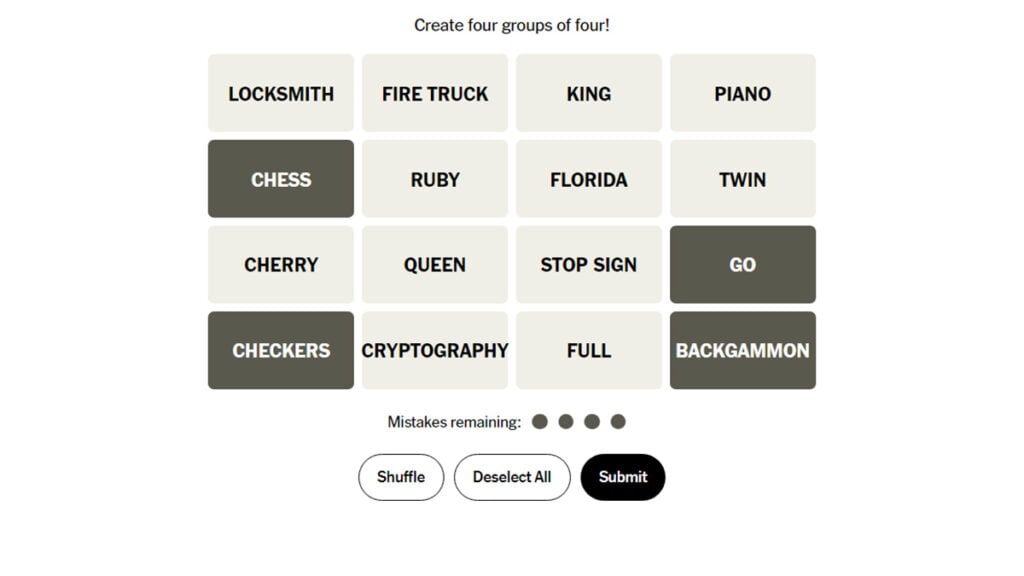What Happened
On June 11, 2025, the New York Times (NYT) released its daily word puzzle, “Connections,” which presented players with a challenge to categorize 16 words into four distinct groups based on shared themes. This particular puzzle, identified as Puzzle #731, featured categories that included “boasting,” “arc-shaped things,” “cereal mascots,” and “citation symbols.” The game is designed to test players’ vocabulary and lateral thinking skills, providing a mix of straightforward and more complex clues.
Players engaged with the puzzle through various platforms, including the NYT website and its Games app, where they could also track their performance and win streaks. The hints provided for the puzzle aimed to guide players in identifying the correct groupings without directly revealing the answers. This approach maintains the challenge while fostering a sense of community among players who often share their experiences and strategies.
Key Details
The June 11 puzzle consisted of the following word groups and their respective themes:
- Yellow Group (Easy): Words related to boasting, including “bluster,” “crow,” “show off,” and “strut.”
- Green Group (Medium): Items that are arc-shaped, such as “banana,” “eyebrow,” “flight path,” and “rainbow.”
- Blue Group (Hard): Cereal mascots, featuring “Count” (Count Chocula), “elves” (Snap, Crackle & Pop), “leprechaun” (Lucky Charms), and “rooster” (Cornelius from Kellogg’s).
- Purple Group (Tough): Citation symbols, which included “asterisk,” “dagger,” “number,” and “parens” (parentheses).
The puzzle’s design encourages players to think creatively and make connections that may not be immediately obvious. The NYT has also introduced a Connections Bot, similar to the Wordle Bot, allowing players to track their statistics and improve their gameplay over time.
Multiple Perspectives
The NYT Connections puzzle has garnered a following among word game enthusiasts who appreciate its blend of nostalgia and challenge. Some players enjoy the straightforward nature of certain categories, while others find the more abstract connections, particularly in the purple group, to be a significant test of their vocabulary and reasoning skills.
According to players, the yellow group often serves as a gateway into the puzzle, helping to build momentum as they tackle the more difficult categories. However, some have expressed frustration with the purple group, noting that the terms can blend into unrelated contexts, making it challenging to identify the correct connections. This mix of experiences highlights the puzzle’s appeal to a broad audience, from casual players to seasoned solvers.
Context & Background
The NYT Connections puzzle is part of a broader trend in daily word games that have gained popularity in recent years, alongside games like Wordle and the Mini Crossword. These games provide a daily mental exercise and foster community engagement as players share strategies and results on social media. The NYT has successfully integrated these games into its offerings, attracting a diverse audience and enhancing its digital presence.
The introduction of features like the Connections Bot reflects the NYT’s commitment to evolving its games section, catering to the preferences of players who enjoy tracking their progress and competing with friends. This evolution is indicative of the growing interest in interactive and engaging digital content, particularly in the realm of puzzles and games.
What We Don’t Know Yet
While the NYT Connections puzzle continues to attract players, there are aspects of its future development that remain uncertain. It is unclear how the NYT will further innovate its games section or whether it will introduce additional features to enhance user engagement. Additionally, the long-term impact of these games on the NYT’s subscription model and overall readership remains to be seen.
As the popularity of word games continues to rise, it will be interesting to observe how the NYT adapts to changing player preferences and the competitive landscape of digital gaming. The ongoing feedback from players regarding the difficulty and structure of puzzles will likely influence future iterations of the Connections game.




